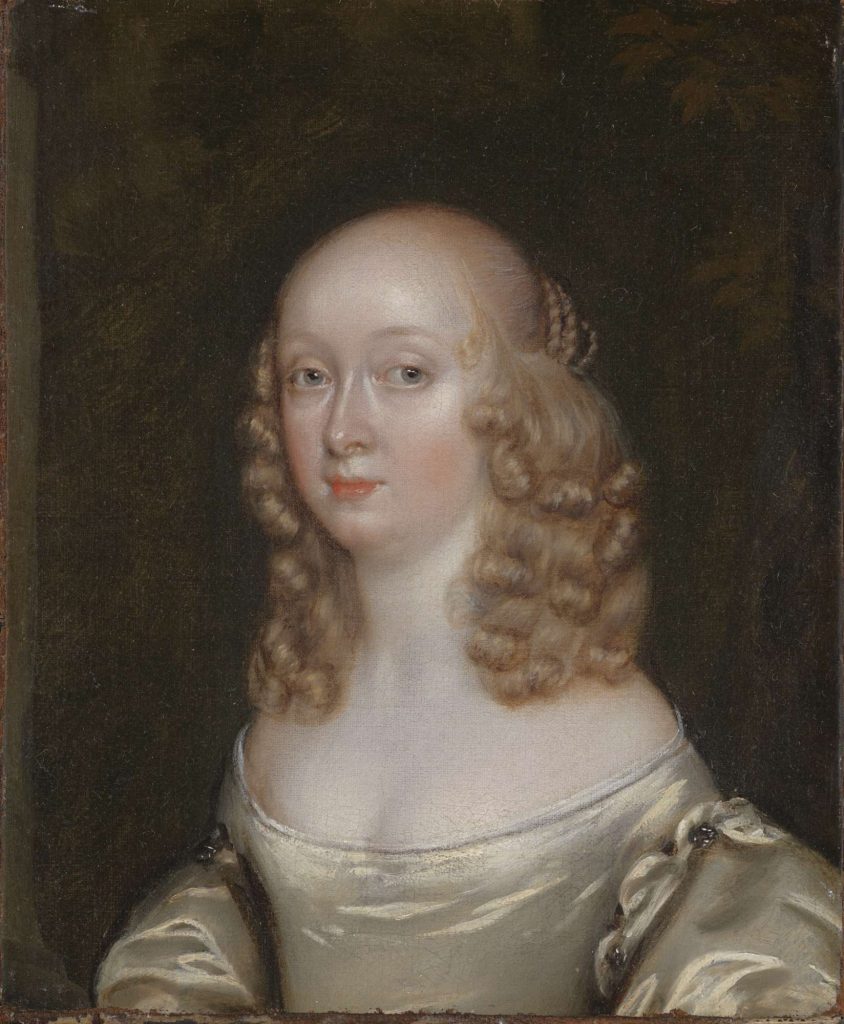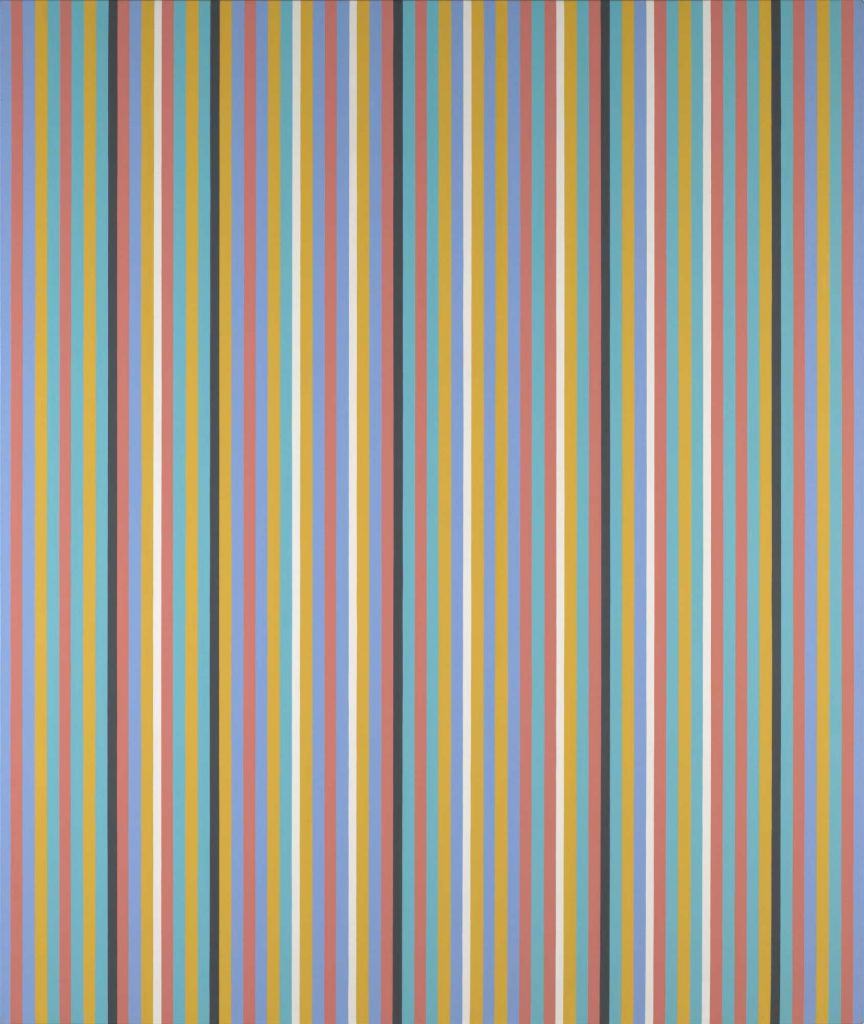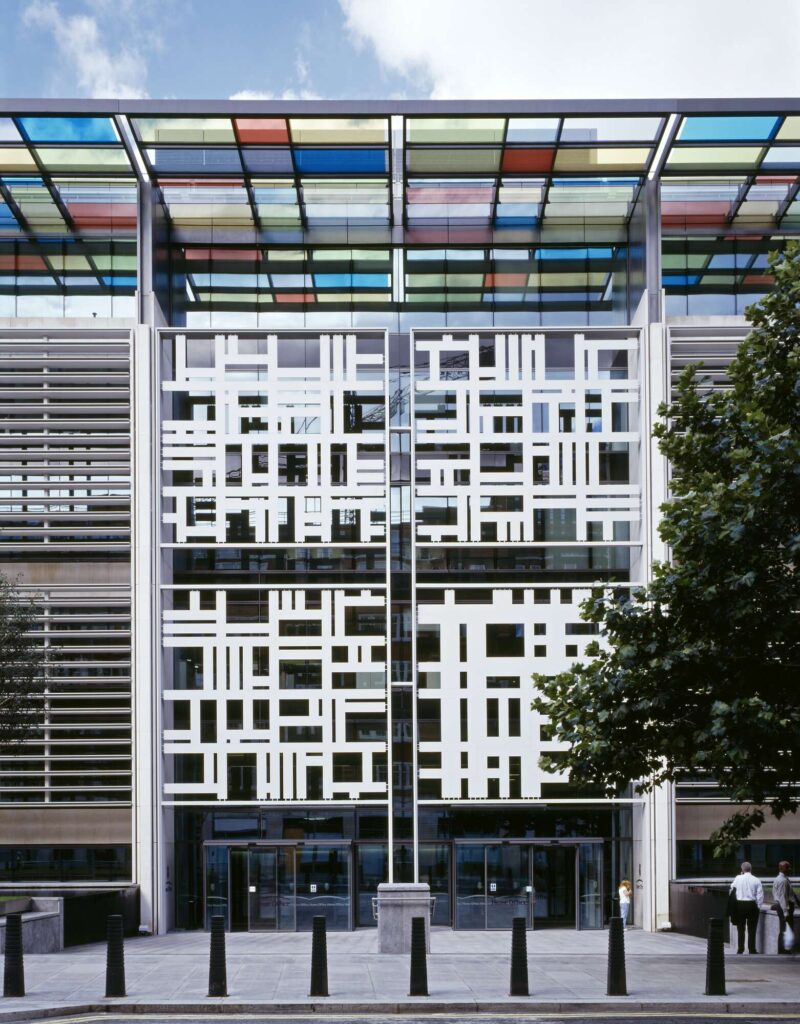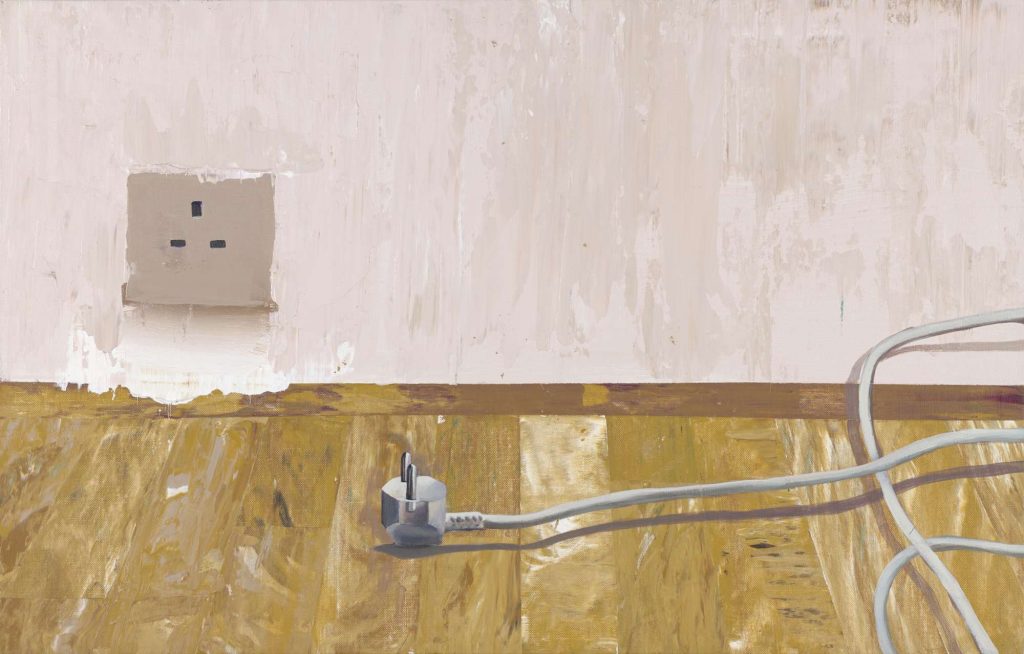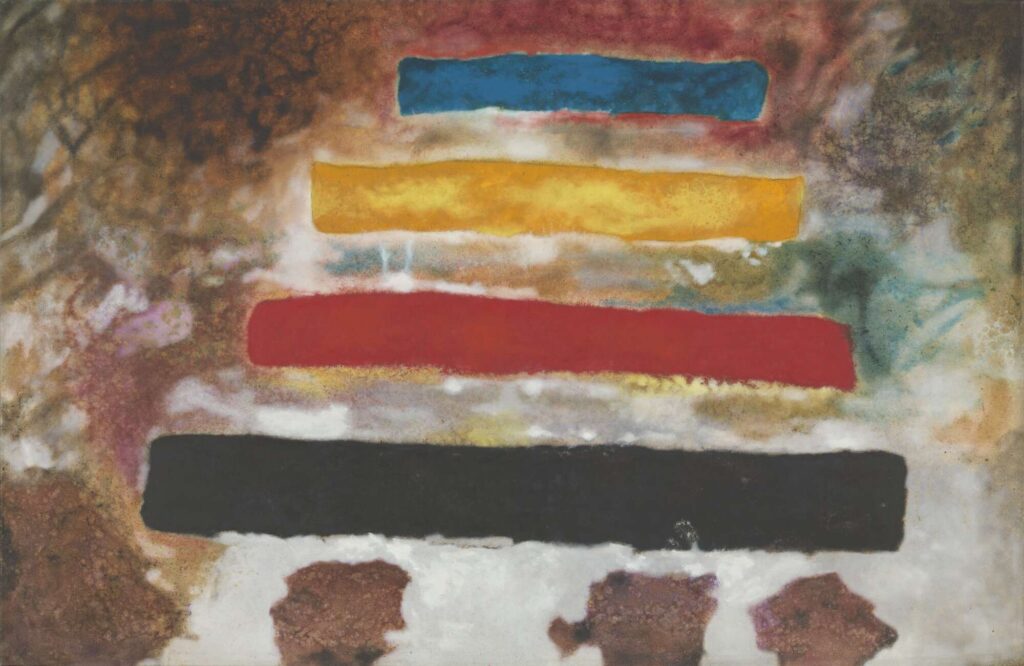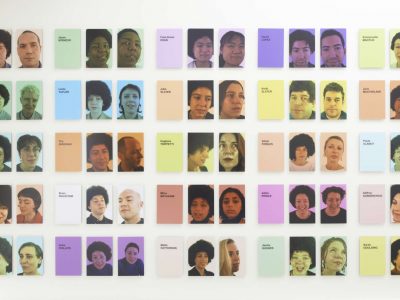12 Collection highlights not to miss
The Government Art Collection is 125 years old. From the earliest work by a female artist in the Collection, to more recent artwork by artists like Hew Locke and Bridget Riley, take a look at some of the works of art our curators have highlighted from this unusual national Collection.
-
Painted by Margaret Sarah Carpenter, one of the most successful 18th-century female artists in Britain, this portrait depicts Ada Lovelace (1815–1852), mathematician and daughter of the poet Lord Byron. While today she is most well-known for her important contribution to early computing, Lovelace was ignored for many years by the male-dominated scientific and mathematical community. In response to Carpenter’s portrait, Lovelace quipped: ‘I conclude she is bent on displaying the whole expanse of my capacious jaw bone, upon which I think the word Mathematics should be written.’
Where is this artwork? This portrait is currently on display at London’s National Portrait Gallery.
-
This 17th-century portrait of an unknown woman in an oyster satin dress was made by Joan Carlile, one of the first British female artists to work professionally. The life and work of Carlile is currently undergoing extensive reappraisal, and only approximately ten paintings have been attributed to her. In Sir William Sanderson’s 1658 book Graphice, Carlile was recorded as one of only four women artists working in oil painting. The subject of this portrait might be Elizabeth Murray, Countess of Dysart (1626–1698), who the artist painted on several occasions. The Government Art Collection bought this work in 2018, a year when it committed to only collect artworks by women for a whole year, to mark the centenary of the Representation of the People’s Act (1918). This Act gave some women in Britain the right to vote for the first time.
Where is this artwork? This portrait is currently on display in 11 Downing Street.
-
Ronald Moody’s wood-carved sculpture Male Standing Figure – The Priest draws on Egyptian, Chinese and Indian sculptural traditions. Moody created a generalised figure that speaks to universal experiences of spirituality. He carved the work at his Paris studio between May and June 1939, before fleeing the Nazis in 1940 and returning to London in 1941. While many of his sculptures were lost, some, including this work, were hidden in the studio of his friend, Dutch artist Kobus Hooykaas. After the war, Moody retrieved his work and, in 1950, the Ministry of Works purchased this sculpture, making the Collection among the first in Britain to acquire a work by Moody.
Where is this artwork? Ronald Moody’s sculpture is currently at the Government Art Collection.
-
Bridget Riley’s Reflection is one of several stripe paintings connected to the artist’s trip to Egypt in the 1980s. In these paintings, Riley drew from the landscape of the Nile Delta and surrounding desert. She saw these colours repeated in the Egyptian Museum in Cairo, the painted tombs of the later pharaohs in the Valley of the Kings and the workers’ tombs at Deir el-Medina. The memory of these sights produced five studio colours that became known as the artist’s ‘Egyptian palette’. In 1998, Riley’s Reflection was acquired by the Government Art Collection to be displayed in British Ambassador’s Residence in Cairo, Egypt, and is an example of how art can support diplomatic work and cultural exchanges between the UK and a host country.
Where is this artwork? In the British Ambassador’s Residence in Cairo, Egypt.
-
Hew Locke’s Flag is one of several works commissioned by the Government Art Collection for the Coronation of King Charles III in 2023. Exploring ‘Britain’s complex national histories’, as the artist himself put it, Flag consists of a ship-like vessel created from pieces of photographs of the Gold State Coach, which sets sail against a background of red velvet. Despite these royal associations, the work takes on the appearance of a tattered flag – and the vessel appears beautiful yet uncomfortable. On board are images of Caribbean sugar plantation workers, ancestors of today’s Black British citizens, who stand against the vernacular architecture (traditional buildings made from local materials) of Guyana. Locke’s Flag reminds viewers that the year of the coronation was also the 75th anniversary of the arrival of another ship, the Windrush.
Where is this artwork? Flag is currently on display at the Foreign Office in London but will be on public display in the Government Art Collection’s exhibition at The National Archives in 2025.
-
The Government Art Collection commissioned Liam Gillick to create an artwork for the new Home Office building, which was constructed between 2003–05. Gillick worked with the architect Terry Farrell to incorporate his work into the design. As an artist, Gillick is interested in the way sculpture can prompt people to interact differently in a social environment. His commission enhanced the façade of the Home Office with a coloured glass canopy and abstract metal panels above the entrance of the building. Gillick’s intervention sought to make the building more approachable and to create an inclusive, civic community in the surrounding public space.
Where is this artwork? You can see Liam Gillick’s commission at the Home Office at 2 Marsham Street.
-
Every year, the Government Art Collection acquires new works by emerging artists from New Contemporaries, an organisation that supports early career artists. Mohammed Sami’s Displacement was one of these acquisitions in 2019. Drawing on his experiences living under Saddam Hussein’s regime in Baghdad, Iraq, and subsequently as a refugee in Sweden, Mohammed Sami creates large-scale paintings of abandoned interiors, claustrophobic cityscapes and uncanny depictions of apparently everyday objects. Displacement shows a Swedish plug abandoned on the floor beside a British power socket.
Sami explains: ‘As an Iraqi artist, people expect to see in my works explicit images of trauma, violence and death. While my paintings do not deal with these subjects directly, they are implicitly there… These autobiographical paintings record a vivid process of remembering. No memories are represented explicitly, but the condition of remembering is present. There is no intention to show evidence, or record loss or death, but there is a burden of remembering.’
Where is this artwork? Sami’s work is currently on display at the British Embassy in Ankara, Turkey.
-
Sara Barker’s sculpture Paper Boats was commissioned by the Government Art Collection for the official British Residence in Bangkok, Thailand. The work takes its title from Bengali poet Rabindranath Tagore’s poem, Paper Boats, in which a young boy folds paper boats, writes his name and village on them and sets them off to sail down a river, wondering who might find them. Barker’s commission consists of various panels painted with abstract shapes, over which she has attached a layer of metalwork. The different elements of the work speak not only to the architecture of the space but also the city outside. Barker’s Paper Boats conjures a journey across an imaginary river, bridging worlds.
Where is the artwork? Paper Boats is in the British Residence in Bangkok, Thailand.
-
Kara Chin’s four-part ceramic piece, Spiralling, was acquired as part of the Government Art Collection’s Art X-UK 2023–24 programme, an annual project that supports work by artists across the UK, alongside building national partnerships.
Chin’s work engages with the cinematic trope of quivering or trembling liquids as omens of imminent disaster in Hollywood movies. The compositions of her four ceramic tiles centre on a bowl of soup. The spiral shape in the soup mirrors a type of lituus wand, a tool used by Roman augurs to mark out sections of the sky and tell the future from the flight patterns of birds. The spiral itself is a form that can continue exponentially, spinning out of control – which, for Chin, has a direct resonance with the unfolding climate crisis of today.
Where is the artwork? Kara Chin’s work is currently at the Government Art Collection.
-
With its jewelled colours and bold outlines, Vanessa Bell’s Byzantine Lady suggests the artist’s affinity for pattern and design. Bell likely completed this portrait in June 1912, when she and her long-time companion, artist Duncan Grant, painted a Spanish woman who modelled for them. Earlier that year, Bell and Grant had visited the Church of San Vitale in Ravenna, Italy, where there is a sixth-century mosaic of the Byzantine Empress Theodora, wife of Emperor Justinian. By the early 1900s, the Byzantine style had become increasingly fashionable in Europe and North America. This resurgence was connected not only to actress Sarah Bernhardt’s 1884 revival of the role of Theodora in Byzantine dress, but also the costumes of Ballets Russes, founded by Sergei Diaghilev in 1909.
Where is this artwork? Vanessa Bell’s work is currently at the Government Art Collection.
-
Michael Craig-Martin’s GO is part of a set of limited-edition prints, commissioned from some of the UK’s most critically acclaimed artists to celebrate London hosting the 2012 Olympic Games and Paralympics. For this print, Craig-Martin depicted a stopwatch with the instruction ‘GO’ written across in giant red letters. The work conveys the immediacy and thrill of excitement as the athletes hurtle out of the starting blocks, and the anticipation from the crowd in the stands. Since the late 1970s, Craig-Martin has drawn upon a repertoire of images of everyday objects. He selects an image, which then becomes ‘emblematic’ of the object. Craig-Martin regards these images almost as ‘words’ from a visual language which is universally understood. This print together with its set was installed at British Ambassador’s Residence in Tokyo, Japan in 2021 on the occasion of the Tokyo Olympics and Paralympics.
Where is this artwork? Michael Craig-Martin’s print is in the British Ambassador’s Residence in Tokyo, Japan.
-
As part of its commitment to address gaps and imbalances within the collection, the Government Art Collection acquired Aubrey Williams’ Quartet No.11, Opus 122 (Shostakovich series) in 2024. Guyana-born Williams settled in London in the 1950s and later spent time working in Jamaica, Florida and, occasionally, Guyana. He developed a painterly language that combined Abstract Expressionism with imagery drawn from pre-Columbian arts and culture and the Guyanese and Caribbean landscape. Throughout his career, Williams found particular sympathy with the music and isolated life of Russian composer Dmitri Shostakovich working under the Soviet regime. Between 1969 and 1981, Williams created a series of 30 paintings, including this one, based on a particular symphony or quartet by Shostakovich. They were first exhibited at the Commonwealth Institute in 1981.
Where is this artwork? Aubrey Williams’ work is currently at the Government Art Collection.
In 1796, leading artists from the Royal Academy fell victim to an incredible hoax about an art masters' secret, masterminded by Ann Jemima Provis.
During the 18th century, diplomatic relations between the UK and Turkey were formalised. A new display of works of art in the British Ambassador’s Residence in Ankara tells the story of this historic engagement, and follows the countries' shared histories.
Have you ever thought that your face was a work of art? Curator and art writer Chiedza Mhondoro explores Sonia Boyce's The Audition in Colour.

